Rail Engineer was recently invited to visit the impressive new Siemens Mobility train manufacturing ‘village’ facility at Goole, Yorkshire. Sustainability, environmental protection, biodiversity, social value, community support and engagement, all feature in the £200 million rail village. This was immediately apparent as we were met by a row of electrical vehicle charging points, bordered by wild flower natural floral planting.
The village will create 700 new jobs, and an additional 1,700 indirect supply chain jobs by 2030. From March next year, half of the London Underground’s 94 new Piccadilly line trains will be assembled at Goole before they start entering passenger service in 2025. The other half of the Piccadilly line fleet and all the body shells will be manufactured in Austria. During our visit we learned about the extensive manufacturing and commissioning facilities, offices, warehouses, stabling sidings, and the space for a 1.2km electrified test track to be installed. We also heard about the long-term plans for the site.
Warm welcome
We were greeted by Sambit Banerjee, joint CEO; Finbarr Dowling, project director; and Milly Johnston, advanced rail technician. Milly joined Siemens Mobility in 2020 as an apprentice and has spent the last three years training. She has also taken on the role of local beekeeper at the apiary (bee yard) on the site, guided by a trained beekeeper from the Selby and District Beekeeping Association. The wild flowers mentioned earlier help to feed the bees.
Finbarr enthusiastically explained that the site spans 67 acres, which is the size of 35 football pitches. When he joined the project, it was a brownfield site with no buildings or hard standing. Siemens chose the site for a number of reasons, including its close location to Goole inland harbour port, the M62 motorway, and its good rail access.
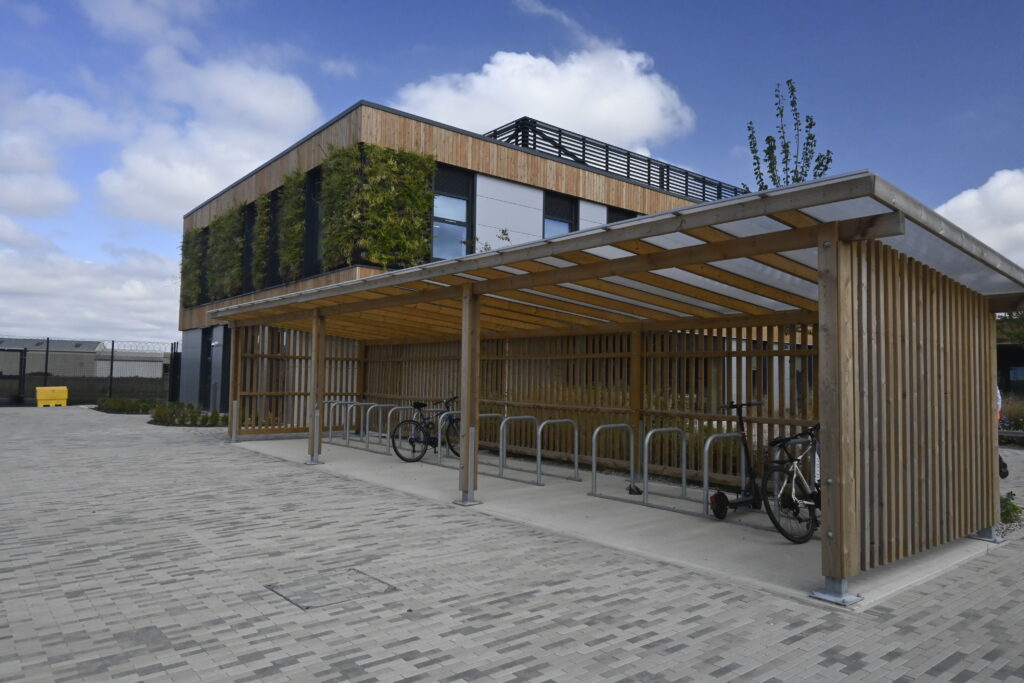
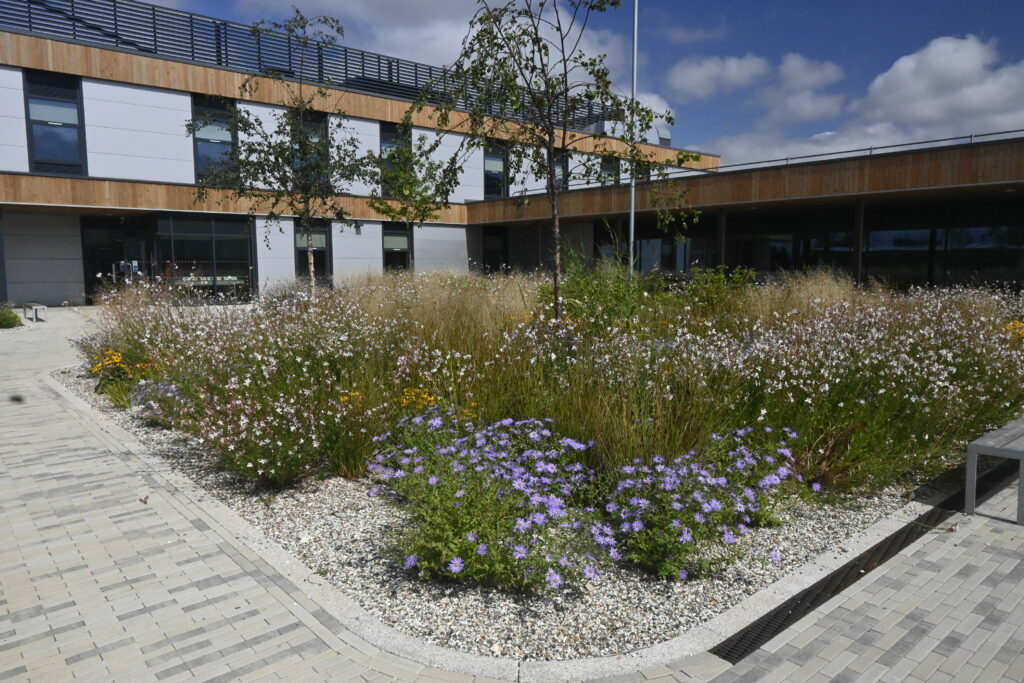
Future vision
At the start of the project, Siemens wanted to enthuse visitors to the rail development, but with only architect’s plans and an extremely large, empty field there wasn’t much to see. Clay10 Creative, based in nearby Hessle was brought on board and, working closely with the architects, created an interactive 3D model of the facility. The giant buildings were replicated, and an animation was created showing the site growing and highlighting Siemens’ vision for the future. This allowed visitors (which included the prime minister) to view the whole area at true scale through a smartphone or a tablet. The system also allowed Siemens Mobility to make changes as the project moved forward.
As most of the buildings are now constructed, Finbarr used the interactive 3D model to display a ‘time lapse’ explaining how the site had developed. The site was believed to have been a rail depot many years ago, so the construction of the train manufacturing facility has not involved greenfield construction, nor did the brownfield legacy of the site cause any issues with contaminated land, archaeology, or buried services. The only issue was relocating some newts found on the site.The site ha
s initially been set up to build tube trains for London Underground. The current Piccadilly line order is for 94 x 9-car trains (846 vehicles) of which about half will be built in Goole. If Transport for London (TfL) is able to obtain funding for all the options in the contract, there could be work on a total of over 2,300 cars. There is also space to significantly expand the manufacturing/assembly facility and lengthen the formation/test/commissioning building to accommodate longer trains if necessary.
Adjacent to the facility is a rail siding which is currently used by two trains a week to a nearby glass factory, so it will have rail access. Siemens originally leased several plots of land on the site, however seeing the site’s potential it was later decided to take up an option to purchase all the 67 acres of land required for the manufacturing facility.
Yorkshire’s GMI Construction was the main contractor and its scope included the necessary rail track for connection to the main railway line. C R Reynolds carried out enablement works and Premier Modular provided the temporary offices.
To the south of the rail village is Oakhill Nature Reserve consisting of over 100 acres. Oakhill, and the associated pools known as the Brickponds, is one of the best Dragonfly and Damselfly sites in Yorkshire. The nature reserve is now also home to nationally threatened declining bird species such as the Willow Tit and over 200 plant and wildflower species are recorded with an ever-increasing wildlife population.
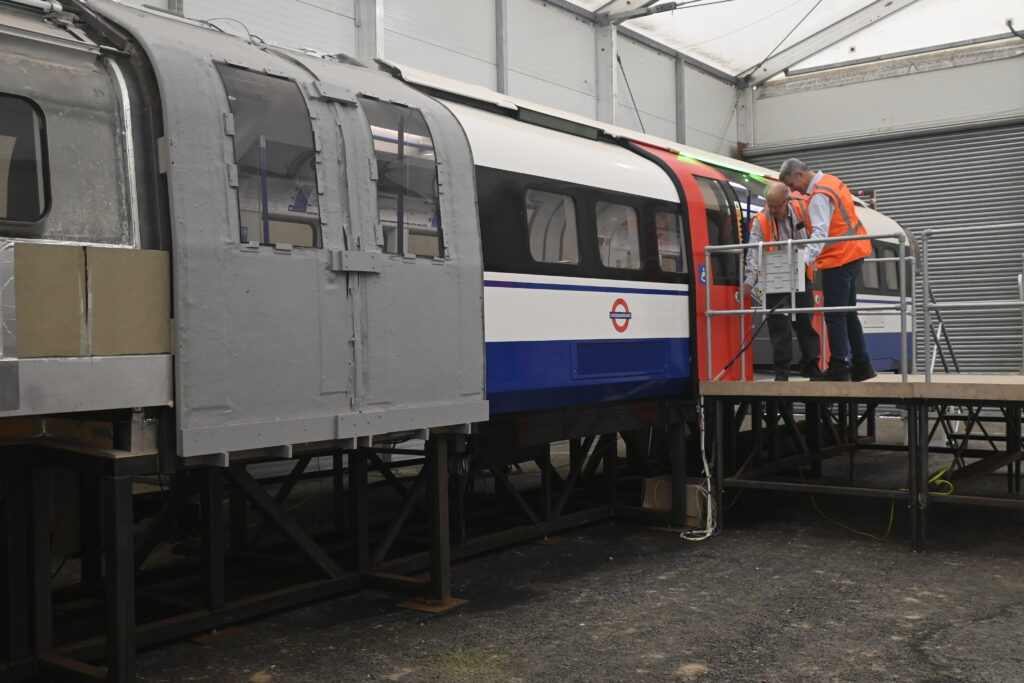
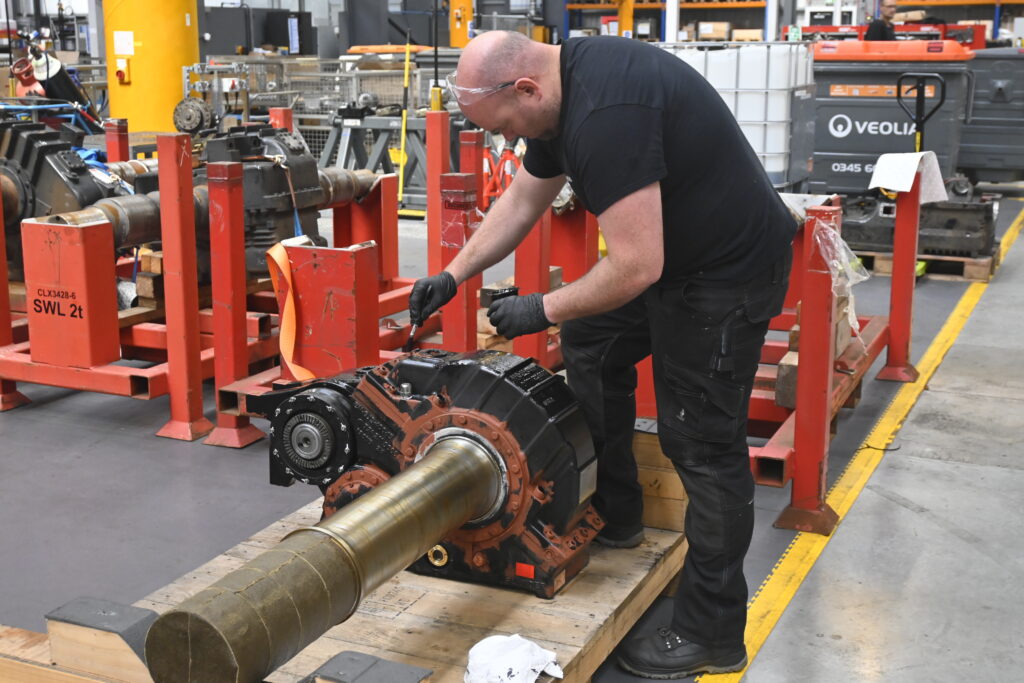
Social value
Siemens is keen to support the local community and surrounding area, and has assisted with funding £150,000 of improvements to the nature reserve. Work has been completed to improve car parking to make it easier to access the nature reserve. Sculptures and benches have been installed for everyone to enjoy along the nature trail and wildlife haven. The nature reserve is regularly visited by both local residents and Siemens Mobility employees. Plans are also in development to introduce a rare breed of sheep in a field on the rail village site.
Sustainability is at the heart of the village, and to support the organisation’s overall global target to achieve net zero by 2030. Air source heat pumps have been installed across the facility to ensure there is no need for gas heating along with many other net-zero contributions.
Siemens Mobility is very keen to promote engineering to younger and diverse people, and they are working with Primary Engineer and young people aged seven to 10 to inspire them to take STEM subjects and excite them with the career opportunities in rail engineering. It was explained that Siemens Mobility is in Goole for the long term, and helping to develop the next generation of railway technicians and engineers is part of its sustainability and social value objectives.
Siemens obtained three redundant Heathrow Express carriages and has created an exhibition in one of them to welcome schools to the village and for children to experience and learn about the different roles there are in rail, in a train similar to one they could be building one day. Other social value contributions to the local community include hosting a Primary Engineer event on the rail village site for young people to experience rail design, sponsoring local gay pride events, and hosting a cricket match in July which raised £21,000 for local charities.
There are currently 12 apprentices learning their trade at the rail manufacturing facility, with a further three set to join soon. There are also five apprentices working at the Components Facility on the site, covered by Malcolm Dobell in this issue. Siemens is already recruiting staff ready for building trains due to commence in March 2024.
With an emphasis on innovation and creative engineering there is also a £50 million centre of excellence in the village being developed with the University of Birmingham. Called the Rail Accelerator & Innovation Solutions Hub for Enterprise (RaisE), its 3,200 square metres of commercial floor space with grade-A office and workshop accommodation, high quality conferencing facilities, and a communal café hub, will act as an innovation focal point for the village.
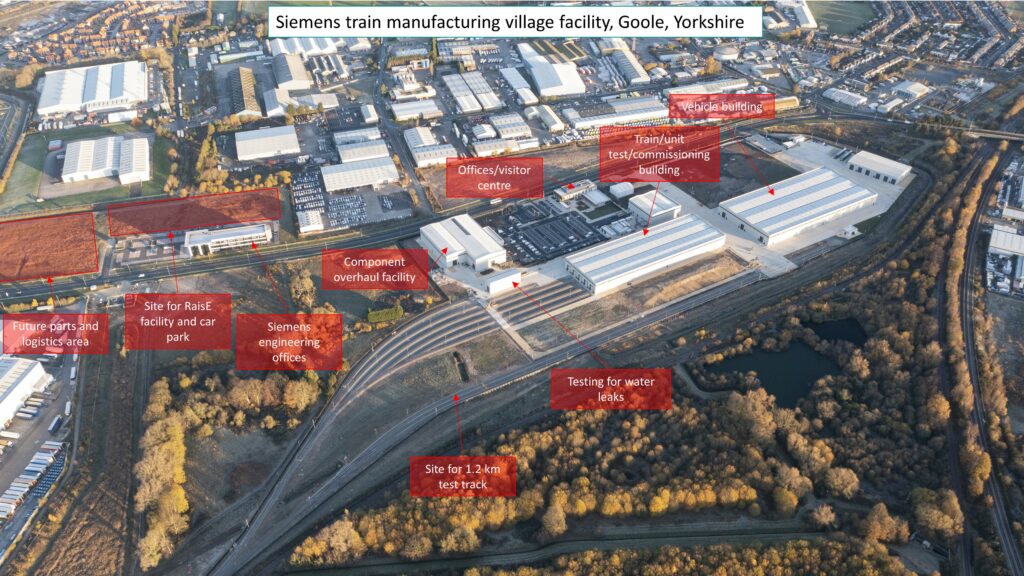
An exciting development
The train manufacturing ‘village’ facility is certainly impressive, and it was clear the site has the capability for more rail construction activity in the future. We were enthused to hear of Siemens Mobility’s plans to work with academia, logistic companies, SMEs, hotel companies, and the local community to make the rail village a success.
The plans include lots of exciting developments to bring more rail activity to the site for years to come and Rail Engineer looks forward to reporting on these when they are announced.

